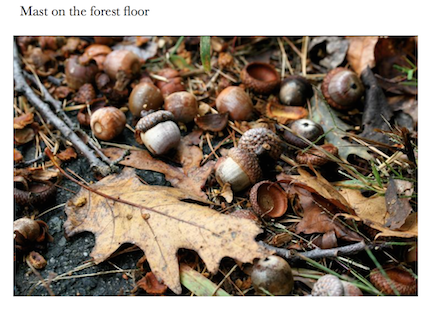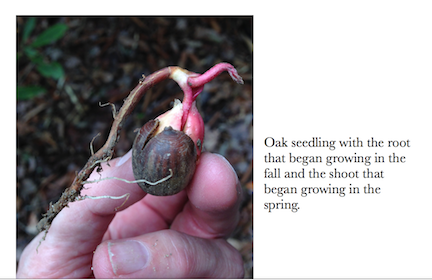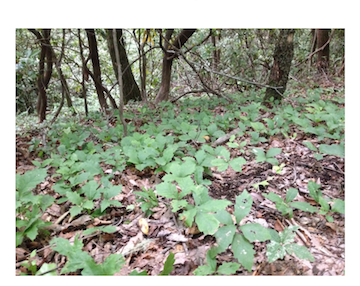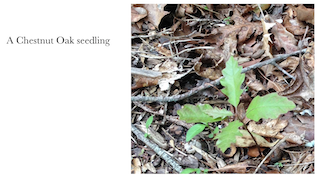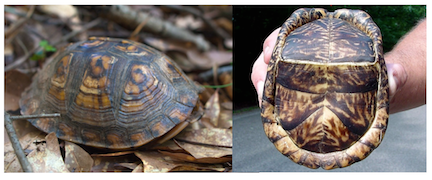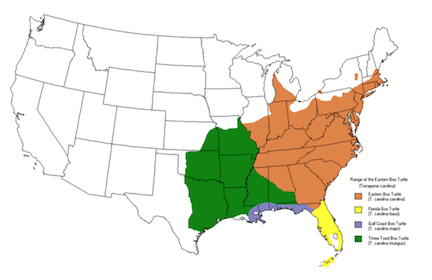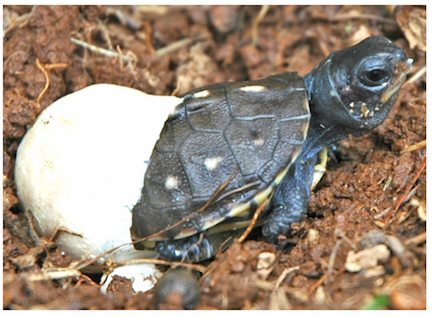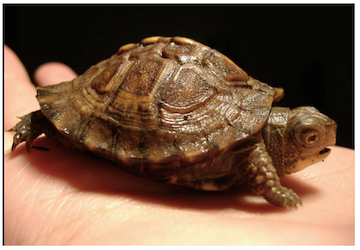Sourwood Trees ~ Plant of the Month October 2018
“It must be the beginning of fall because the sourwood leaves have turned a brilliant scarlet color.”
by Linda Martinson Blue Ridge Naturalist
On a beautiful October afternoon not long ago, a young friend showed me the remaining plants in the small garden that she and her sister had planted. I noticed that there were still some lovely basil plants with perfect leaves that would be scrumptious chopped and sprinkled on slices of the few last tomatoes in our garden—we could share! Suddenly she pulled some leaves off a woody shrub nearby, “Look! These are sourwood leaves — if you are ever really hungry, these are edible.” She’s right — young tender sourwood leaves are edible, and they can be used to make tea. It is best, however, not to eat very many of them because they are quite sour and can be an effective laxative.
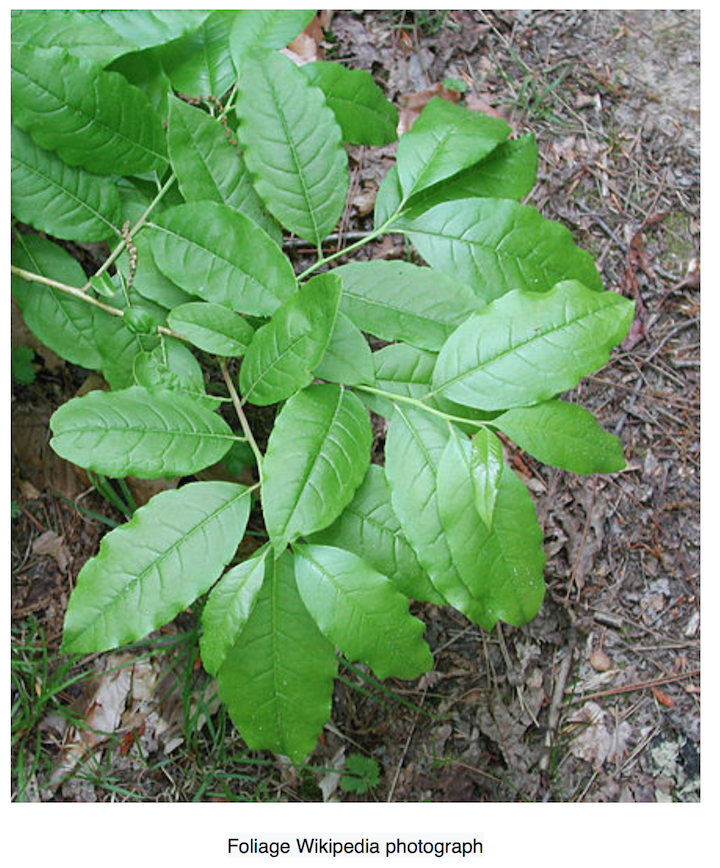
Sourwood trees (Oxydendrum arboretum) are native to eastern North America, one of the few endemic trees that are not found in other continents unless planted there. It is the only species in the genus Oxydendrum, i.e., there are no other plant species in the heath family (Ericaceae) related to it so it has its own species name. Although native sourwood trees typically grow from southern Pennsylvania south to northwest Florida and west to southern Illinois, they are most common in the Southern Appalachian Mountains. They are most often a component of oak-heath forests because, like most members of the heath family, sourwoods prefer acidic soil. Sourwood is a fairly common understory tree, often bush-sized in areas like ours with dry, acidic soil, usually growing no taller than about 25-30 feet with a slender trunk with gray fissured bark, and often leaning toward the sunlight because it has a rather narrow crown. However, sourwood trees can grow straight and tall, as high as 60+ feet, if there are not many trees around competing for root space and/or sunshine.
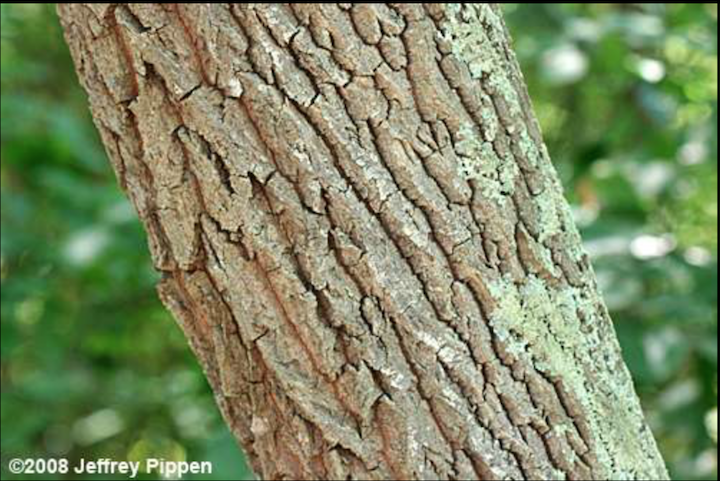
Sourwood is an attractive tree with fragrant sprays of small white flowers in late spring/early summer and brilliant scarlet/dark purple leaves in fall. Sourwood leaves are often the first to turn color because their sap is less acidic than most trees. Their leaves alternate and are about 3-5 inches long with finely toothed margins. The dense clusters of small, bell-shaped flowers produce fragrant nectar and are actively pollinated by bees in the spring. The nectar is well known for the delicious sourwood honey that the bees produce, and the juice from the sourwood blossoms can be used to make sourwood jelly. Deer browse the new leaves in the spring and summer, and it is a popular tree for fall webworms to use for their large grey webs that protect their larvae as they browse on the late summer leaves. The shoots of sourwood trees were used by the Cherokee and the Catawba to make arrow shafts, and the mature wood of the trees is heavy and close- grained and can be polished to high shine.
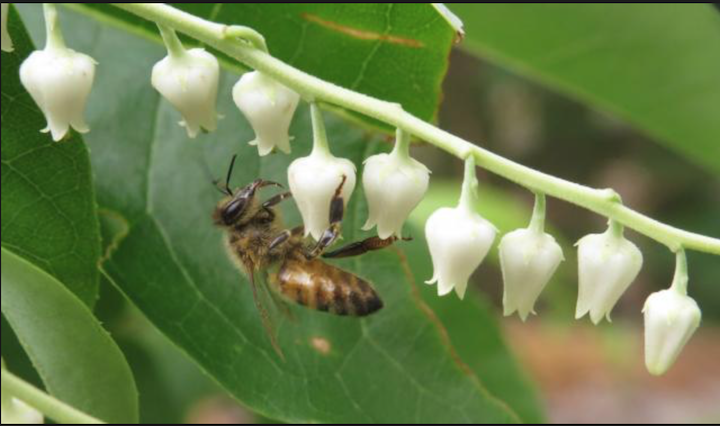
Photo credit: barkandgarden.com
Finally, as you embrace all the virtues of sourwood trees, search the Internet for a popular old-time Appalachian tune, Sourwood Mountain—several musicians from Andy Griffin to the Carolina Chocolate Drops have recorded it. And definitely make plans to attend the 42nd annual Sourwood Festival in Black Mountain NC next August.
Resources:
Will Cook Carolina Nature website
Jeff Pippen North Carolina Wildflowers, Shrubs and Trees website
Tim Spira Wildflowers & Plant Communities of the Southern Appalachian Mountains and Piedmont, 2011 UNC Chapel Hill Press
Photo credit of red sourwood tree leaves , djbones Flickr

